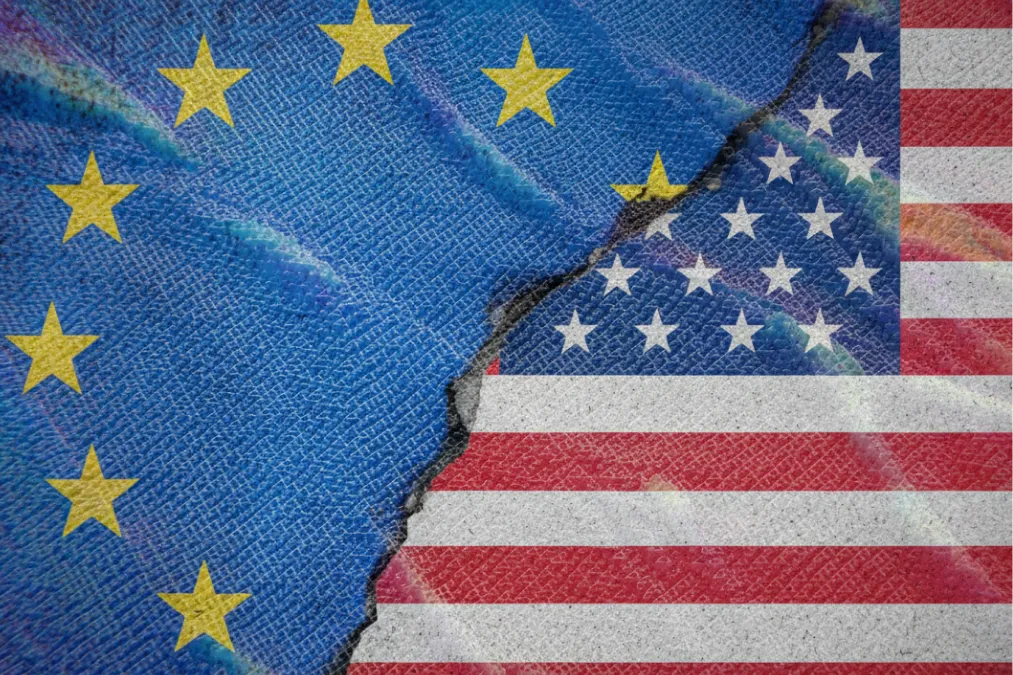Philosophy vs velocity: the great AI governance divide
Europe’s rules-first EU AI Act and America’s innovation-first, standards-led model reflect distinct political and economic logics shaping AI governance. The post maps four dimensions, philosophy, legislative instruments, geopolitics/economics, and emerging convergence, and explains what they mean for multinational teams planning dual-compliance strategies.

The quest for Artificial Intelligence dominance is rapidly reshaping economies and societies, and governments are racing to impose order amidst the accelerating development of these technologies.
Two governance philosophies have emerged on either side of the Atlantic: Europe’s rules-first model and the United States’ innovation-first model.
Both aim to ensure trustworthy and safe AI while maintaining a competitive environment for developers, but their paths toward that goal reveal deep differences in political culture, economic strategy, and governance philosophy. Recent political shifts in Washington have further accentuated these contrasts.
This post examines four dimensions of this transatlantic divergence: governance philosophy, legislative instruments, geopolitical and economic considerations, and emerging convergence, as well as the implications of each on the global AI landscape.
Governance philosophy: precaution vs. pragmatism
At the heart of the EU–US divide lies a difference in regulatory philosophy.
The European Union has long embraced a precautionary, rights-based model of governance.
Its approach to AI mirrors its stance on data protection and digital markets: technology must operate within a framework that safeguards citizens’ rights and minimizes systemic risk before deployment. The EU’s risk-based classification system, introduced under the AI Act, categorizes AI applications from “minimal” to “unacceptable” risk, attaching proportionate compliance obligations to each.
By contrast, the American approach favors a pragmatic, innovation-driven model.
Its tradition of sectoral regulation, whereby different agencies oversee healthcare, finance, defense, or consumer protection, means there is no single federal AI law. Instead, guidance has emerged from a network of institutions such as the National Institute of Standards and Technology (NIST), the FederalTrade Commission (FTC), and the Office of Science and Technology Policy (OSTP).
The emphasis in the United States is on voluntary frameworks, industry self-regulation, and technical standards, underpinned by the belief that flexibility fuels innovation and global competitiveness.
In short: the EU aims to contain risk before it scales, while the US aims to enable innovation and course correct as risks appear.
Legislative instruments: one law vs. many frameworks
The EU AI Act, adopted in 2024 and set to enter into force gradually from 2025onward, represents the first comprehensive, binding AI law in the world. The Act bans a narrow set of “prohibited” uses such as manipulative social scoring, and imposes rigorous obligations on “high-risk” systems, including requirements for transparency, human oversight, robustness, and data governance.
Compliance is mandatory, subject to audits and certification, and non-compliance can attract fines of up to 7% of global annual turnover. Enforcement will be coordinated by the newly established European AI Office alongside national supervisory authorities.
In keeping with its own regulatory tradition, the U.S. has opted for a mosaic of policy tools rather than a single statute.
Under the Biden administration, the 2023 Executive Order14110 on Safe, Secure, and Trustworthy AI directed federal agencies to adopt standards for AI safety testing, watermarking, and algorithmic fairness. It was seen as the cornerstone of a coordinated federalAI policy (but notably did not create binding obligations for private developers).
In early 2025, the Trump administration rescinded EO 14110 and introduced the Executive Order onRemoving Barriers to American Leadership in Artificial Intelligence. This order reversed much of the prior framework’s emphasis on regulation, focusing instead on reducing compliance burdens, streamlining federal oversight, and prioritizing economic competitiveness.
While some elements such as NIST’s AI RiskManagement Framework (RMF) and federal investment in safety testing remain intact, the overarching tone has shifted toward de-regulation and national innovation leadership.
As always in the U.S. federal model, these initiatives are complemented by state-level efforts such as California’s CCPA/CPRA, and sectoral laws like the Equal Credit Opportunity Act or HIPAA, which may apply to AI where relevant. This layered system offers flexibility but also creates regulatory fragmentation and enforcement gaps, particularly for general-purpose or foundation models.
Where the EU prioritizes legal certainty, the US prioritizes policy agility. Each reflects its broader governance tradition: the EU attempts to codify ethics into law, while the US attempts to operationalize ethics through standards, market competition, and incentives.
Geopolitical and economic dimensions: regulation as strategy
AI governance is not just a legal or technical matter; it is also a geopolitical instrument.
For the EU, the AI Act is part of a larger project of digital sovereignty. By setting global norms, Brussels seeks to export its regulatory model through the so-called “Brussels Effect” i.e., the ability of EU law to shape global corporate behavior beyond its borders. Much as GDPR influenced global privacy practices, the EU hopes the AI Act will become a de facto international benchmark, particularly for firms operating in multiple jurisdictions.
The EU’s bet is that trust will become a competitive advantage, and that early regulation will foster both accountability and consumer confidence.
The United States, meanwhile, treats AI as a strategic technology domain central to economic and national security, reframing AI governance as a question of national competitiveness, calling for deregulation, defense-related research, and expanded private-sector participation. It represents a pivot from “safe and trustworthy AI” to “secure and sovereign AI innovation”, aligning U.S. policy more closely with industrial strategy than rights protection.
This divergence extends to economic philosophy.
Europe’s model is compliance-driven, designed to ensure a level playing field and protect fundamental rights. The U.S. model is increasingly market-driven, designed to maximize innovation and mitigate harms post hoc.
Both carry trade-offs: excessive regulation can stifle experimentation, while under-regulation can erode public trust and create social externalities.
For global companies, these tensions translate into regulatory interoperability challenges. An AI system compliant under NIST RMF may not automatically satisfy EU conformity assessments. Cross-border operations therefore require dual compliance strategies and careful policy monitoring.
Emerging convergence: from parallel paths to shared standards
Despite these philosophical and institutional differences, signs of convergence remain.
The EU–US Trade and Technology Council (TTC) continues to serve as a forum for cooperation on technical standards, model evaluation, and AI safety research. The NIST AI RMF and the EU’s forthcoming harmonized standards share common principles, namely risk management, transparency, and accountability, even if they differ in legal status.
Both jurisdictions are investing in AI safety testing, benchmarking, and foundation model evaluation, although their policy goals now diverge. The EU emphasizes enforceable trust, while the U.S. emphasizes agile innovation. Collaboration through standards bodies and research partnerships may still gradually narrow the transatlantic gap.
In the long term, while political alignment seems unlikely, convergence may yet emerge through market alignment.
Multinational firms are likely to adopt the strictest standard as a default, ensuring interoperability and reducing compliance costs. As with theGDPR, the EU’s rules-based model may again exert global influence, though this time facing a more assertively deregulatory U.S. stance given the perceived market opportunity of relatively unchecked growth in the space.
Conclusion: two logics, one goal
Despite the utilization of seemingly opposing philosophies of governance, is there a path to harmonization in the future?
Europe’s “rules before tools” approach seeks legitimacy through accountability and public trust, while America’s “tools before rules” approach seeks legitimacy through innovation, flexibility, and global leadership.
Neither path is inherently superior; each reflects distinct political economies and risk tolerances. Yet as AI systems grow more powerful and interconnected, the need for common principles and interoperable standards remains undeniable. The challenge for policymakers is not to choose between “rules” or “tools”, but to design governance architectures that balance precaution with progress.
In that balance lies the future of trustworthy, competitive, and human-centered AI.

